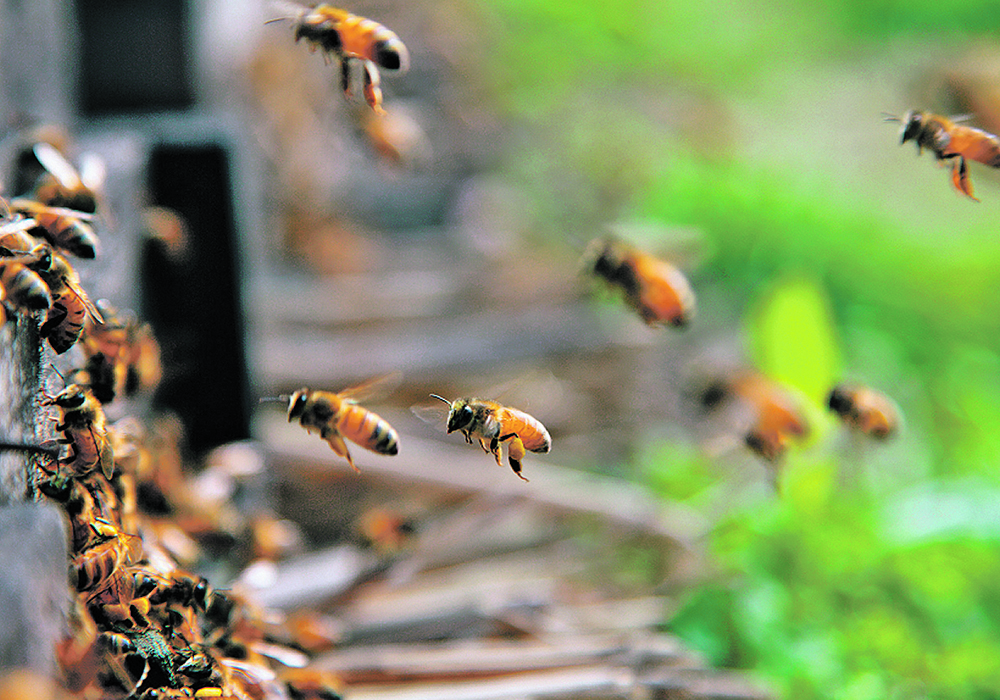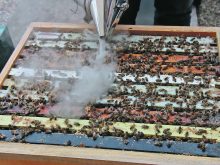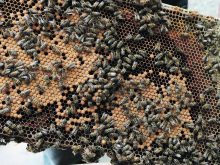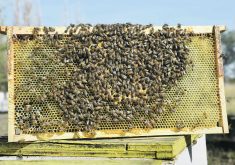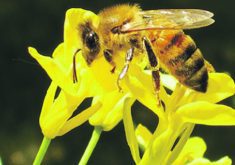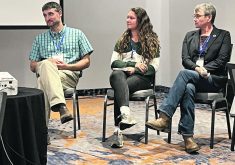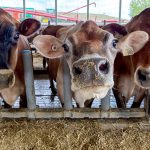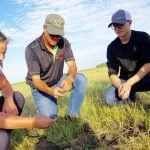Recent experiments find that the mean average lifespan was half that of caged bees in similar studies in the 1970s
A study by entomologists at the University of Maryland has shown that the lifespan of individual honeybees kept in a controlled laboratory environment is 50 percent shorter than it was in the 1970s.
Over the past decade, many beekeepers have reported high loss rates requiring more replacements to keep their operations viable. Much of those losses have been due to the impact of varroa mites. The study explored the phenomenon further, focusing on environmental stresses, disease, parasites, pesticide exposure and nutrition.
“I was doing literature research for an entirely different experiment and noticed that some publications reported lifespans (of honeybees) much longer than I had experienced in my work,” said Anthony Nearman, PhD student in the department of entomology. “This prompted a much deeper review of the literature where I began collecting data on publications over the past 50 years.”
Read Also

Alberta cracks down on trucking industry
Alberta transportation industry receives numerous sanctions and suspensions after crackdown investigation resulting from numerous bridge strikes and concerned calls and letters from concerned citizens
According to a news release, Nearman worked with Dennis VanEngelsdorp, entomology associate professor at UMD, on standardized protocols for rearing adult bees in a laboratory. Following earlier studies, they collected bee pupae from honeybee hives when the pupae were within 24 hours of emerging from waxed cells. The bees finished growing in an incubator and were kept as adults in special cages.
It was while evaluating the results of supplementing the caged bees’ sugar water diet with plain water to replicate natural conditions that Nearman observed that, regardless of diet, the mean average lifespan of his bees was half that of caged bees in similar experiments in the 1970s (17.7 days today compared to 34.3 days then).
“When I plotted the lifespans over time, I realized there’s actually this huge time effect going on,” he said. “Standardized protocols for rearing honeybees in the lab weren’t really formalized until the 2000s so you would think that lifespans would be longer or unchanged. Instead, we saw a doubling of mortality rate.”
This is the first study to show an overall decline in honeybee lifespan potentially independent of environmental stresses, hinting that genetics may be playing a role and influencing the trends seen in the beekeeping industry.
“In the paper we suggest that artificial selection may be the culprit if the shorter lifespans are genetic,” said Nearman. “One of the breeding factors favoured by beekeepers and breeders is disease resistance. Selecting colonies for disease resistance is based on their apparent disease loads. However, bees with shorter lifespans would have fewer opportunities to pass on disease so colonies with shorter-lived bees would appear healthier (because of) lower disease loads. Thus, it may be possible that, while selecting breeding stock based on disease resistance, breeders have actually been selecting for shorter lifespans.”
Nearman said that they were isolating bees from the colony life just before they emerge as adults, so whatever could be reducing their lifespan is happening before then.
“This introduces the idea of a genetic component,” he said. “If this hypothesis is right, it also points to a possible solution. If we can isolate some genetic factors, then maybe we can breed for longer-lived honeybees.”
He said that xenobiotics such as pesticides, fungicides or herbicides, varroa, and viruses show variable effects in bees, one of which can be shorter adult lifespans. But since these threats do not outright kill colonies, they most likely do not have an immediate or dramatic effect on honeybee genetics generally. In addition, previous studies have shown that, in the field, shorter honeybee lifespans corresponded to less foraging time and, therefore, lower honey production. This is the first study to connect those influences to colony turnover rates.
The news release stated that the researchers observed the lab-kept bees could be experiencing some sort of low-level viral contamination or pesticide exposure during the larval stage in the hive and when being fed by worker bees. However, the bees did not express any clear symptoms of that kind of exposure. They also noted that a genetic component to longevity has been shown by other insects such as fruit flies.
“Because we breed them as part of our agroecosystem, they are outside environmental selective pressure,” said Nearman. “Natural selection typically requires hundreds to thousands of years in free breeding populations, short of bottleneck events that isolate populations from each other.”
Understanding to what degree shortened lifespans affect queens and drones is still a work in progress. For queens, the current work suggests two to five years while recent work on drone lifespan suggests a high level of variability. Nearman said that further work needs to be done.
Taking the profile of honeybee lifespans and increasing them, Nearman said that there has been some work to suggest artificial selection for lifespan is possible in honeybees.
“A few publications in the late 1970s and early 1980s started down that path but it seems to have stopped there,” he said. “Understanding the biological basis for lifespan is a very popular topic and, given the social nature of honeybees and their incredible ability to extend their lifespans during winter, using honeybees to do so is also popular. I’d be surprised if someone soon didn’t attempt to breed a longer-lived bee.”
Nearman said that his main area of research is looking at the relationship between physiological signs of bee age and colony loss.
“In short, we suspect that a change in colony age demographics predicts colony loss. The work looks very promising. We are hoping to publish the work next year. In terms of shorter lifespans, we are looking into repeating some of the earlier experiments from the 1950s and 1960s that originally defined what we know about bee lifespans. From there, it is a matter of repeating it in different parts of the world to discover where this phenomenon may or may not be happening.”
If differences in longevity are found, they can isolate and compare possible contributing factors such as genetics, pesticide exposure, and the presence of viruses.
The research was published in the journal Scientific Reports.

